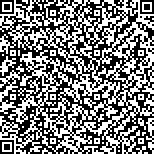姚叶林,孙颖华,陶金好,等.超声测量儿童膈肌前中后部运动的可重复性研究[J].中华物理医学与康复杂志,2020,42(7):601-605
扫码阅读全文

|
| 超声测量儿童膈肌前中后部运动的可重复性研究 |
|
| |
| DOI:10.3760/cma.j.issn.0254-1424.2020.07.005 |
| 中文关键词: 机械通气相关性膈肌功能障碍 膈肌 超声 重症 儿童 |
| 英文关键词: Ventilators Diaphragm dysfunction Ultrasound Critical illness Children Breathing |
| 基金项目: |
|
| 摘要点击次数: 5683 |
| 全文下载次数: 6170 |
| 中文摘要: |
| 目的 探讨超声测量儿童膈肌前、中、后部运动的可重复性和差异性。 方法 选择2018年11月至2019年6月入住儿科重症监护病房(PICU)的患儿30 例。患儿取平卧位,使用5 MHz超声探头,置于右锁骨中线与肋下缘交点,用M型超声记录随呼吸运动的膈肌前、中、后部的移动度和收缩速度,重复测量两次。采用ICC系数表示膈肌移动度和收缩速度两次测量的可重复性。采用方差分析探讨不同部位膈肌移动度和收缩速度的差异性。 结果 膈肌各部位移动度两次测量的组内相关系数分别为ICC前膈肌=0.89、ICC中膈肌=0.95、 ICC后膈肌=0.90,膈肌各部位收缩速度两次测量的组内相关系数分别为 ICC前膈肌=0.90、ICC中膈肌=0.94、ICC后膈肌=0.95,膈肌各部位移动度和收缩速度的测量均显示出良好的可重复性。膈肌前、中、后部移动度分别为[(8.1±3.1)mm]、[(7.4±3.0)mm]、[(5.5±2.3)mm],膈肌前、中、后部收缩速度分别为[(12.5±4.8)mm/s]、[(11.5±6.3)mm/s]、[(8.9±4.0)mm/s],膈肌前、中、后部位间的移动度和收缩速度比较,差异有统计学意义(P<0.05)。 结论 利用超声测量儿童膈肌前、中、后各部位运动具有较高的可重复性,儿童膈肌前、中、后部的移动度和收缩速度具有差异性,单纯某一部位的膈肌运动不能代表整体膈肌的运动功能。 |
| 英文摘要: |
| Objective To explore the reproducibility of ultrasound measurements of children′s anterior, middle and posterior diaphragm motions. Methods Thirty children admitted to a pediatric intensive care unit were positioned supine and a 5MHz ultrasound probe was placed over the intersection of their right midclavicular line with the costal margin. M-mode ultrasound was used to record the excursion and contraction velocity of the anterior, middle and posterior diaphragm during respiration. The observations were duplicated so the repeatability of the measurements could be evaluated using intra-group correlation coefficients calculated for the diaphragm excursions and the contraction velocities. Analysis of variance was used to explore the differences in excursion and contraction velocity among different parts of the diaphragm. Results The intra-group correlation coefficients calculated for the anterior, middle and posterior diaphragm were 0.89, 0.95 and 0.90 respectively. The corresponding values for the contraction velocities were 0.90, 0.94 and 0.95 respectively. Both variables measured by ultrasound showed high repeatability. The average anterior, middle and posterior diaphragm excursion values (in mm) were 8.1±3.1, 7.4±3.0 and 5.5±2.3, and the corresponding average contraction velocities (in mm/s) were 12.5±4.8, 11.5±6.3 and 8.9±4.0. Conclusions Measurements of children′s diaphragm motions using ultrasound show high repeatability. The excursions and contraction velocities of the anterior, middle and posterior diaphragm differ in children. The motion of one part of the diaphragm cannot represent the functioning of the entire diaphragm. |
|
查看全文
查看/发表评论 下载PDF阅读器 |
| 关闭 |
|
|
|